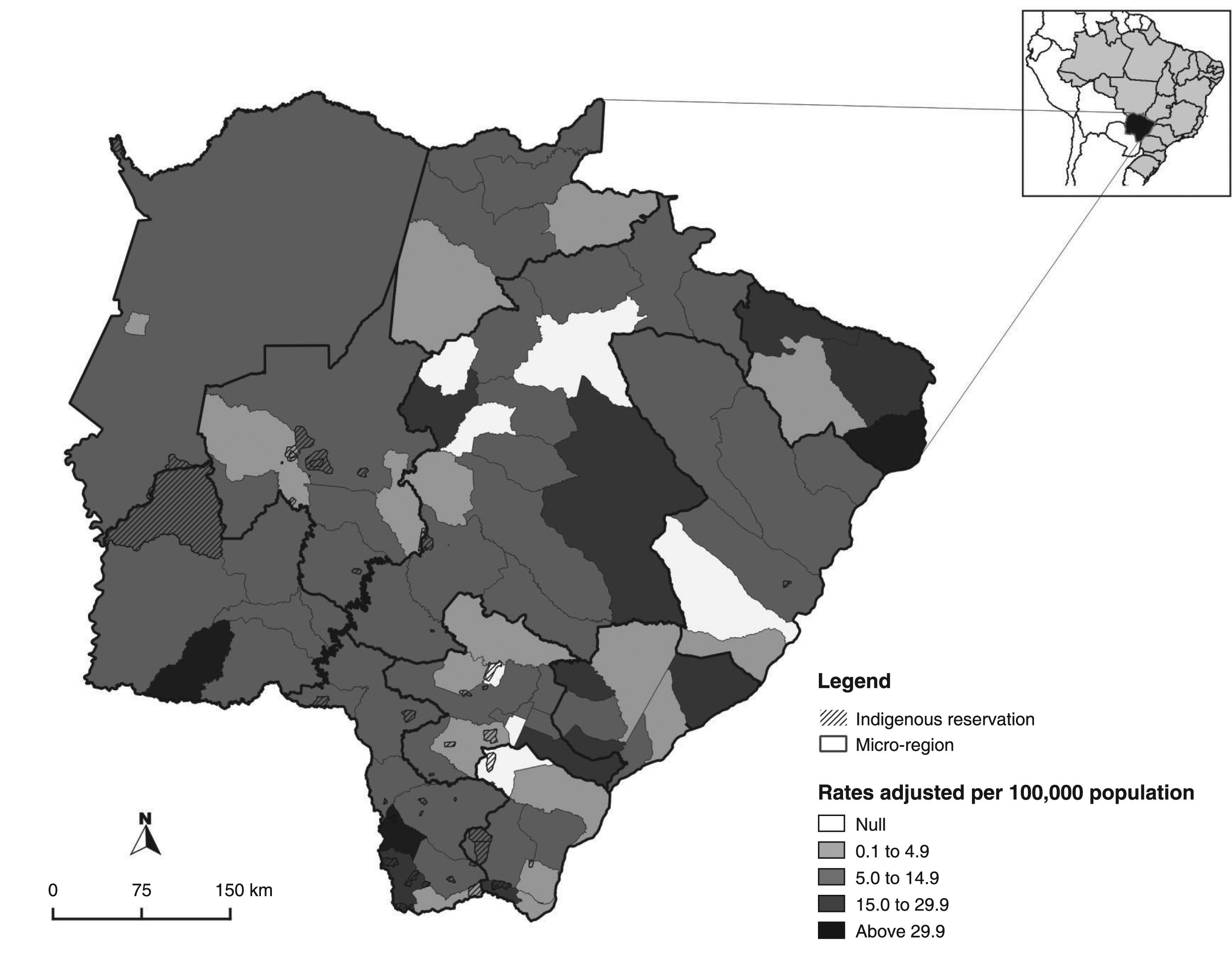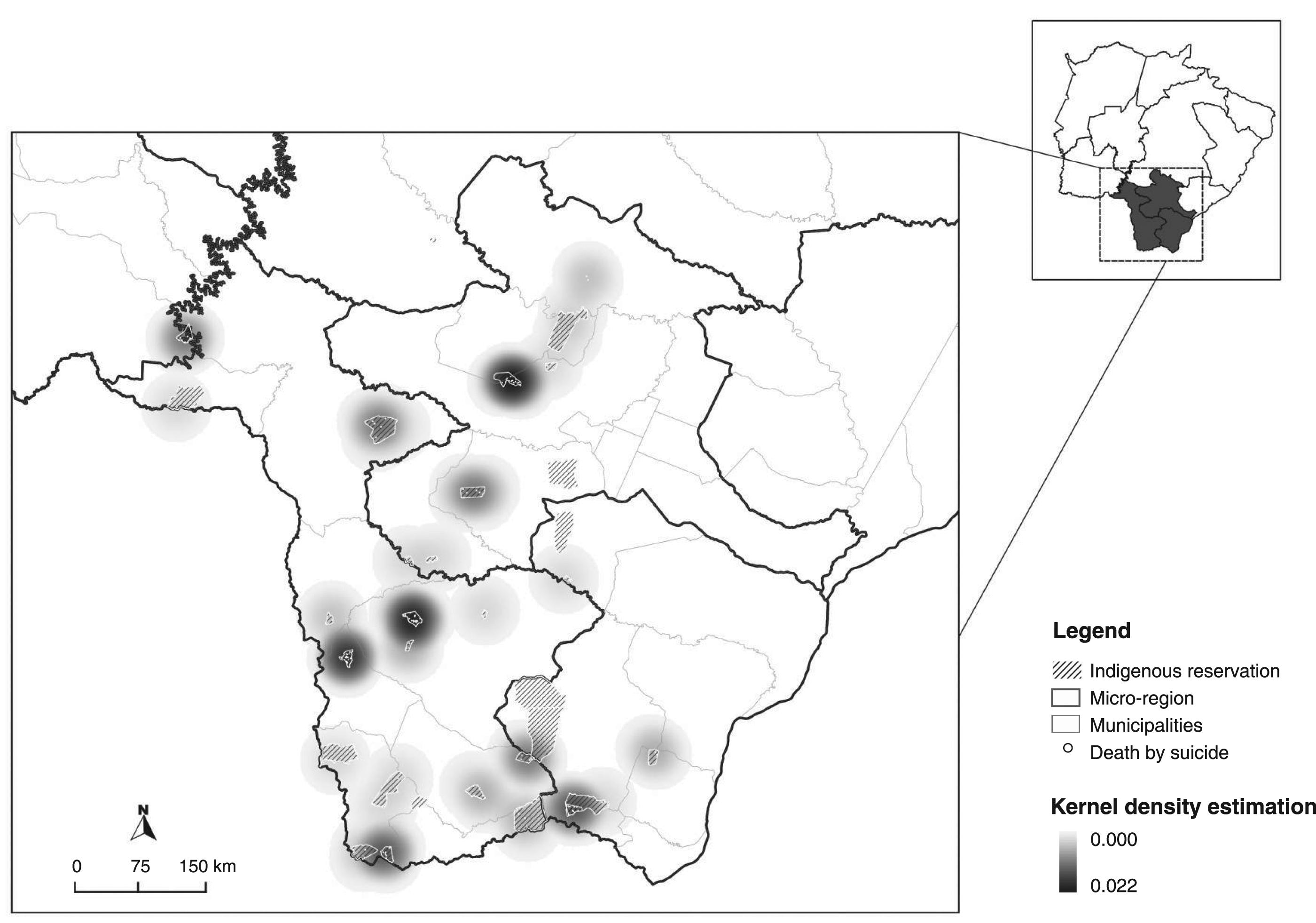Objective:
To examine spatial-temporal distribution and risk of suicide, as well as trends in suicide mortality rates, in the indigenous and non-indigenous population of the state of Mato Grosso do Sul, Brazil.
Methods:
Data were obtained from the Information Department of the Brazilian Unified Health System. Deaths recorded as voluntary self-inflicted injuries (ICD-10 codes X60.0 to X84.9) were considered suicide. Suicide rates were estimated and adjusted by age in the population > 9 years of age. Kernel analysis was used to assess the spatial distribution of suicide cases, while trend analysis was carried out using a non-parametric test (Mann-Kendall).
Results:
The suicide risk among the indigenous population was 8.1 (95%CI 7.2-9.0) times higher than in the non-indigenous population. For indigenous residents in the 15-24 age group, the risk was 18.5 (95%CI 17.5-19.6) times higher than in the non-indigenous population. The majority of indigenous cases were concentrated in a few villages in reservation areas, mainly occupied by Guarani-Kaiowá and Guarani-Ñandeva groups. Rate patterns remained stable over time in both groups.
Conclusion:
Suicide is a serious public health problem in Mato Grosso do Sul, and has had an alarming and disproportionate impact on the indigenous population for more than a decade.
Suicide; minority issues and cross-cultural psychiatry; interdisciplinary relations; epidemiology; social anthropology




